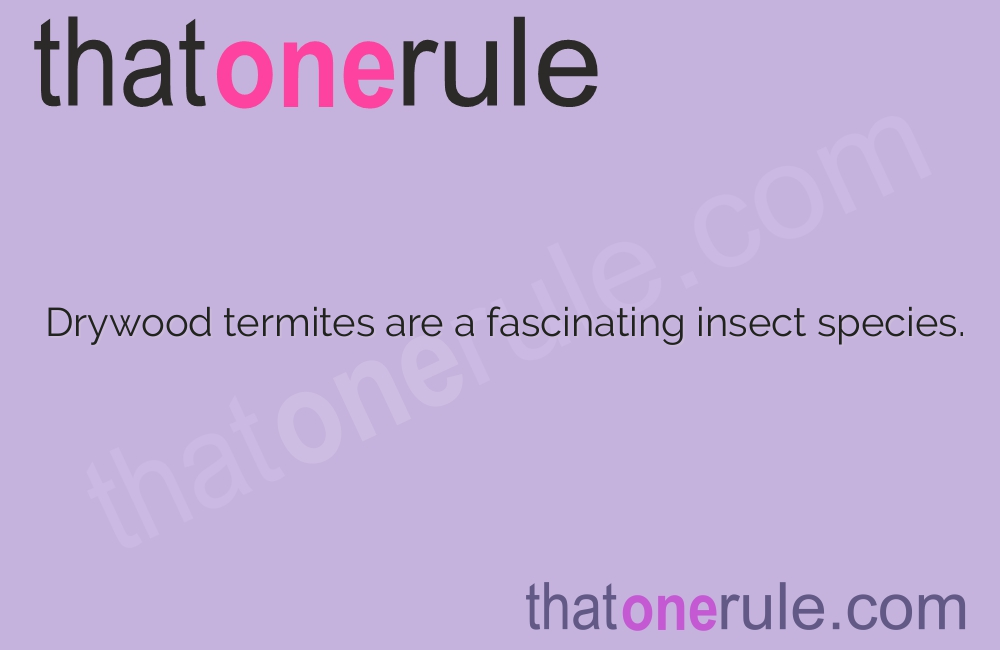Drywood Termites – Fascinating Facts You Need to Know

Drywood termites are a fascinating insect species.
Did you know that drywood termites don’t require contact with moisture?
Drywood termites have the ability to extract water from the wood they consume.
These termites can cause significant damage to wooden structures.
Despite their small size, drywood termites can collectively weaken the integrity of a building.
It’s important to regularly inspect and treat for drywood termite infestations.
Drywood termites are often referred to as silent destroyers due to their ability to cause damage undetected.
One of the signs of a drywood termite infestation is the presence of small wood pellets or frass.
Drywood termites have distinct, elongated bodies with straight antennae.
The reproductive members of drywood termite colonies have wings.
These termites are often found in coastal regions with warm climates.
Some drywood termite species are known to have large colonies consisting of multiple interconnected galleries.
When disturbed, drywood termites can produce a tapping or rattling noise.
Drywood termites play a vital role in breaking down dead wood in natural ecosystems.
Drywood termites are a common pest in residential and commercial buildings.
To prevent drywood termites, it’s important to seal any gaps or cracks in the structure.
The damage caused by drywood termites can be expensive to repair.
Drywood Termites – Fascinating Facts You Need to Know part 2
Drywood termites can weaken the structure of a home, compromising its safety.
Infestations are often discovered during renovations or construction projects.
Wood that is infested by drywood termites can have a hollow sound when tapped.
Drywood termites have a slower reproductive rate compared to other termite species.
These termites can be challenging to eradicate without professional help.
The lifespan of a drywood termite is relatively long compared to other insects.
Drywood termites primarily feed on cellulose found in the wood they infest.
Regular maintenance and inspections can help detect drywood termite activity early.
Infestations can spread from one wooden item to another within a building.
Drywood termites are resilient and can survive in dry conditions for extended periods.
In severe infestations, structural reinforcement may be necessary to ensure the safety of a building.
Drywood termites are more active during warmer months.
The reproductive cycle of drywood termites involves the release of winged members called alates.
Drywood termites are often mistaken for ants due to their similar appearance.
Drywood termites can infest various types of wood, including furniture and picture frames.
These termites can sometimes be transported to new areas through infested wooden materials.
Heat treatment is an effective method for eliminating drywood termites.
Drywood termites are known for their ability to create intricate tunnel systems within wooden structures.
The damage caused by drywood termites can compromise the resale value of a property.
Drywood termites can be found in both urban and rural environments.
Regular termite inspections are crucial for long-term pest prevention.
Drywood termite colonies can remain hidden for years before being detected.
Drywood termites have been around for millions of years, adapting to various environments.
The saliva of drywood termites contains enzymes that help break down wood.
Drywood termites are a constant threat to wooden boats and ships.
In some cases, the presence of drywood termites may require fumigation of the entire building.
The economic impact of drywood termite damage is significant in the construction industry.
Understanding the behavior and habits of drywood termites is essential for effective pest control strategies.

